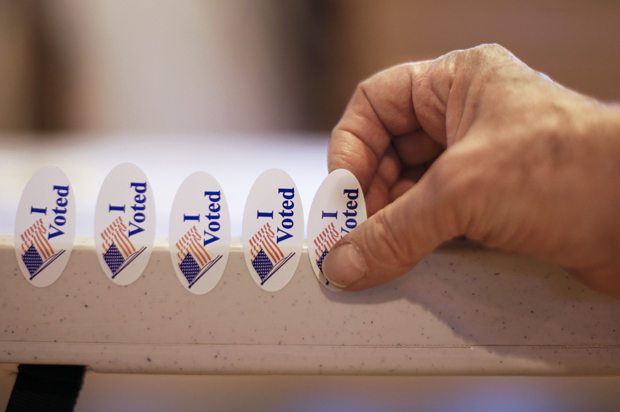New York may be a deep blue state, yet on voting rights it lags far behind other progressive states. Oregon and California, for example, have adopted automatic or automated voter registration, which adds eligible voters to the rolls whenever they interact with certain public agencies. New York, on the other hand, has no early voting, limited absentee voting, frequent elections and arduous registration and party change deadlines. These are made worse by the fact that the state’s primary elections are closed: Only registered Democrats or Republicans may vote in their respective party primaries.
All that could change with the New York Voters Act, recently introduced by state Attorney General Eric Schneiderman. The legislation would require that all primaries be consolidated (which will help people who have inflexible work schedules), implement same-day registration, extend voting hours, allow for no-excuse absentee voting and institute automatic voter registration (AVR). It also includes provisions to increase language access, train poll workers better and restore voting rights for people on parole.
To explore the implications of this legislation, I analyzed the Cooperative Congressional Election Studies (CCES) surveys for the 2012 presidential election and 2014 midterm election. Registration status is difficult to ascertain because respondents often incorrectly remember whether they are registered. To estimate the demographics of the unregistered population of New York as well as possible, I created a measure that includes both those who reported being unregistered and those who were matched into Catalist and were not registered, regardless of their reported registration. Individuals who reported being registered but could not be matched to Catalist were not included in this analysis. To explore the voting population, I explored the matched respondents who also voted. Respondents who reported voting but could not be matched to Catalist were excluded from the analysis.
Who Are the Unregistered New Yorkers?
In 2012, 67 percent of the New York population was white, but 74 percent of voters were white and only 55 percent of the unregistered population was white. While African-Americans made up 14 percent of the population, they made up 20 percent of the unregistered population. Latinos made up 12 percent of the population but 16 percent of the unregistered population. The average age for a New York voter was 50, compared to 41 for an unregistered New Yorker.

Turning to 2014, the gaps were even bigger. The white share of the general public dipped to 66 percent, but 79 percent of voters were white, while only about half of the unregistered population was white. The unregistered population was more likely to identify as independent than voters (21 percent of unregistered people, compared to 10 percent of voters and 13 percent of New Yorkers). While 27 percent of voters were Republicans, 17 percent of the unregistered were. Unregistered New Yorkers were less supportive of domestic spending cuts (30 percent put it as their preferred method of reducing the deficit) than either voters (40 percent) or the general New York population (36 percent). Unregistered New Yorkers were more likely be low-income: 73 percent made less than $60,000 a year and 37 percent made less than $30,000 a year, compared to 56 percent and 27 percent of the general population, respectively.

New York has low turnout compared to the rest of the country, and its diversity is not represented in the voting booth. In 2012, the voting population was seven percentage points whiter than the adult citizen population, and in 2014 the voting population was 14 points whiter. For comparison, between the 1988 election and the 2012 election, the United States electorate became 11 percentage points less white (85 percent white in 1988, 74 percent white in 2012). Given the research on how voting impacts policy outcomes, this could deeply distort the state’s democracy.
Automatic Voter Registration Could Change the Country
Evidence is still coming in on the impact of AVR, but early evidence is positive. Oregon automatically registered 225,000 people through the state Department of Motor Vehicles, and 43 percent voted in the 2016 election. Other reforms, like same-day registration and looser voting registration deadlines, are shown to bolster turnout. In New York and other states where Democrats have power, progressives should push for the implementation of automatic voter registration, same-day registration and early voting, as well as other reforms to ease access. Of the six states in which Democrats have a trifecta, meaning they control the governor’s office and both legislative chambers, four still don’t have automatic voter registration. In states where they don’t have full power, progressives should put automatic voter registration on the ballot. (Alaska, a heavily Republican state, recently passed automatic voter registration by referendum.) Automatic voter registration can ensure that all Americans are represented in the voting booth, and progressives should embrace it.


